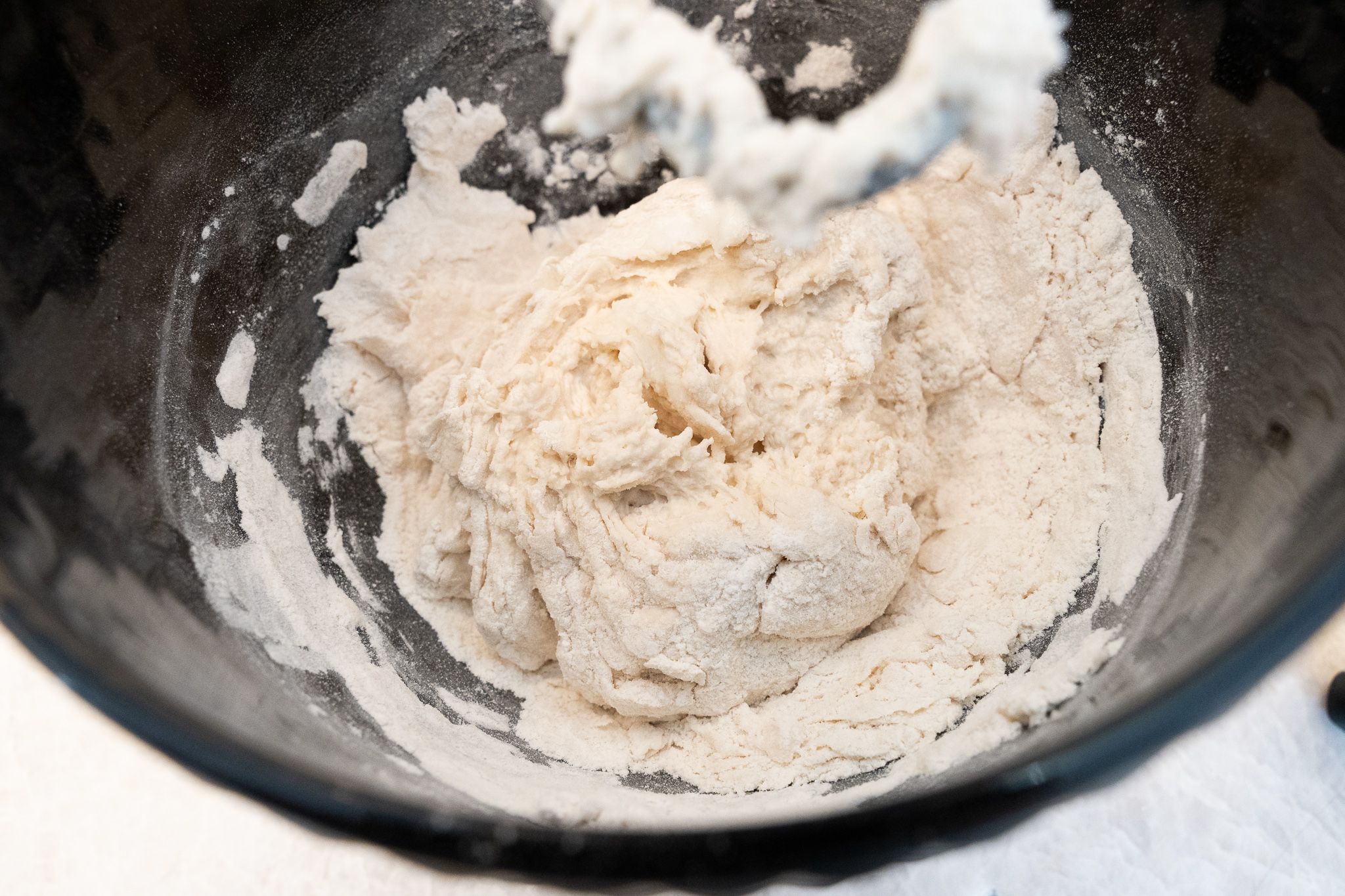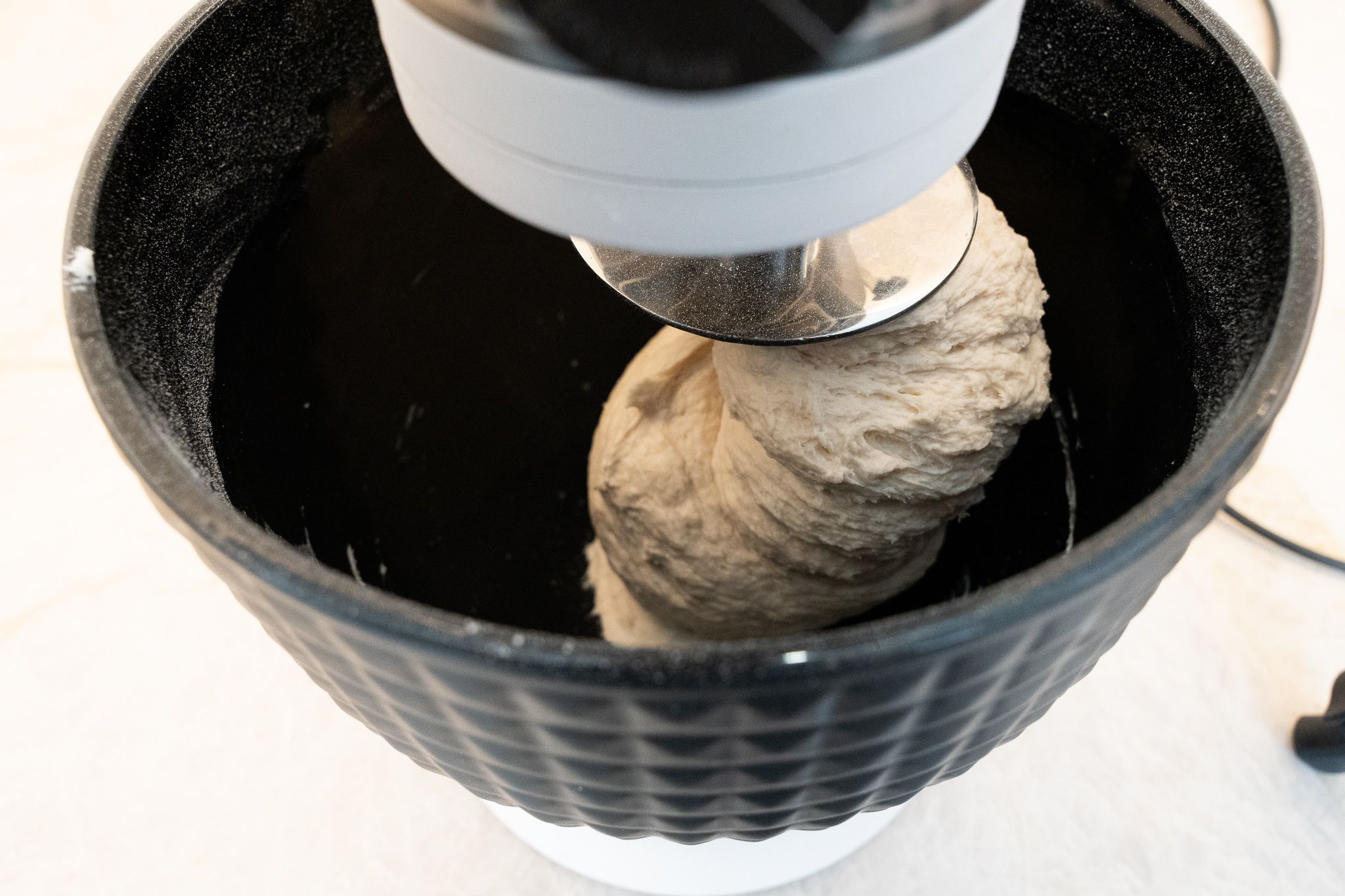
Pizza Dough with Lard
Directions
For Your Next Pizza Dough, Try Lard
What’s better than pizza? How about homemade pizza? You can use this dough recipe with any of your favorite toppings, sauces and cheese, and it’s amazing with all of them. One of our personal favorites is Tarte Flambée Pizza (get the recipe here).
But what does lard add to pizza dough? Why not use olive oil, which is so popular these days? Pizza dough typically calls for high gluten flour, such as “00” Italian pizza flour or bread flour. That’s because pizza dough should be a little chewy and have that bread-like quality. The dough should be capable of being stretched until it’s nice and thin, and to achieve a Neapolitan-style crust, you need good gluten structure. Adding fat to dough can improve its texture and enhance its flavor. But when you add a liquid fat such as olive oil to flour, you may prevent the water from properly hydrating the flour, which makes the dough hard to stretch and, ultimately, results in poor gluten structure. Because it is solid at room temperature, lard won’t prevent water from properly hydrating the flour; you’ll end up with a consistent dough that is well hydrated and contains all the textural and flavor benefits of adding a little fat. Better still, the flavor of lard is delicious, especially when factoring in the bacon forward flavors this recipe delivers.
Ingredients
- Bread flour 500 grams
- Fresh yeast 12 grams (6 grams if using active dry)
- Kosher salt 12 grams
- Sugar 10 grams
- Warm water, 300 ml
- Lard, (room temperature) 50 grams
Procedure
- In a bowl or measuring cup, combine warm water with sugar and yeast, stir to dissolve.
- In mixing bowl, combine flour and salt, mix together, add water/sugar/yeast mixture over top of flour and salt. Add in lard, breaking it up into 5-6 smaller pieces.
- If using an electric mixer such as a KitchenAid, start on a low setting until the dough comes together; it might seem a little dry at first but as it kneads, the dough will actually be quite wet and sticky.
- Once dough comes together, turn the mixer to a medium setting and knead for about 8 minutes.
- If you don’t have a KitchenAid, you can definitely do this by hand. Start the exact same way in a large mixing bowl; use a spoon to stir the ingredients until they start to come together, transfer to a large clean surface (such as a large wooden cutting board) and proceed to knead by hand until the dough is smooth and elastic.
- Once the dough is well-kneaded, transfer to a lightly greased bowl (of course using lard for this part). Cover tightly with plastic film and set aside.
- Once the dough has doubled in size – allow about 2 hours — remove from bowl on to a clean and lightly floured surface. Divide dough into 3 equal balls, about 290 grams each (smaller if you like), cover with a damp kitchen towel and let to rest and rise again for another 2-3 hours, or until it has doubled in size again. Now, you’re ready to make pizza!
- To make pizza the next day, transfer the pizza dough into the refrigerator before the initial proofing rising. This will actually slow development of the fermentation process, giving you an even better, more complex tasting dough.









